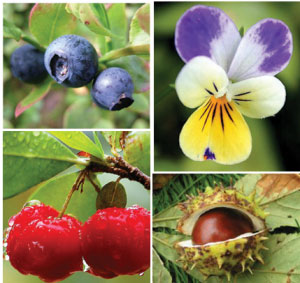Flavo-C’s Secret Ingredients
 Flavo-C is an amazing supplement because it contains foods high in vitamin C AND bioflavonoids.
Flavo-C is an amazing supplement because it contains foods high in vitamin C AND bioflavonoids.
Both are involved in preventing heart disease, protecting against cancer, creating radiant skin, bolstering the immune system, protecting the lungs, healing wounds and sores and even building bones and muscle. The list is even longer.
Most everybody has heard of taking vitamin C to fight the flu. But Flavo-C is even better.
What makes Flavo-C different
Surprise! Almost every vitamin C pill on the market today is NOT even made from citrus.
Instead it’s a synthetic (artificial) concoction made from corn sugar. Surprising to learn, but true.
Flavo-C, on the other hand, is not manmade. It contains fruits and other foods high in nutrients. It’s the most natural source you can find. It contains more biochemical complexes to defend your body.
What’s in FlavoC? Only Whole Food Complexes
Only foods are in Flavo-C – foods high in the entire vitamin C complex (not just ascorbic acid) as well as bioflavonoids.
Acerola Cherry
Acerola is a cherry the size of a berry and is indigenous to tropical rainforests.
It is one of the highest vitamin C-containing fruits – much higher per volume than oranges, lemons or limes.
Vitamin C is the stuff of which cells are cemented together. A deficiency affects every membrane in the body.
Given flu symptoms, the cherry is an ideal adjunct to an ailing body. It supports the lungs, sinuses, throat, eyes and immune system.
Amazon herb researcher Leslie Taylor, ND writes:
“Acerola juice is as common and popular in Brazil as orange juice is in North America. As a natural remedy in Brazil, a handful of fresh fruit is eaten for fever and dysentery.
It is also used there as an anti-inflammatory, astringent, stimulant for the liver and renal systems, diuretic, and to support heart function as well as to heal wounds.
It is employed as a nutritive aid for anemia, diabetes, high cholesterol levels, liver problems, rheumatism, tuberculosis, and during convalescence.”
Wild Pansy
While many food researchers have turned to buckwheat as a source of the flavonoid called rutin, wild pansy is, hands down, a superior source.
One of rutin’s roles in biochemistry is to stabilize vitamin C, allowing it to be more effective fighting the flu.
Bilberry
A good source of antioxidants (and vitamin C), bilberry also helps with many of the symptoms of cold and flu, including diarrhea.
Horse chestnut
Horse chestnut reduces inflammation, which is helpful when symptoms of swollen sinuses and restricted air passages.
Flavo-C works for more than colds and flu
 Flavo-C is a versatile supplement because vitamin C and bioflavonoids have such ubiquitous roles in keeping us healthy.
Flavo-C is a versatile supplement because vitamin C and bioflavonoids have such ubiquitous roles in keeping us healthy.
From varicose veins to serious illnesses, the foods in FlavoC are needed for immune system support, healing, prevention, inflammation, swelling and lung capacity.
Learn more about Flavo-C : Click here
photos © 2008 Desi
